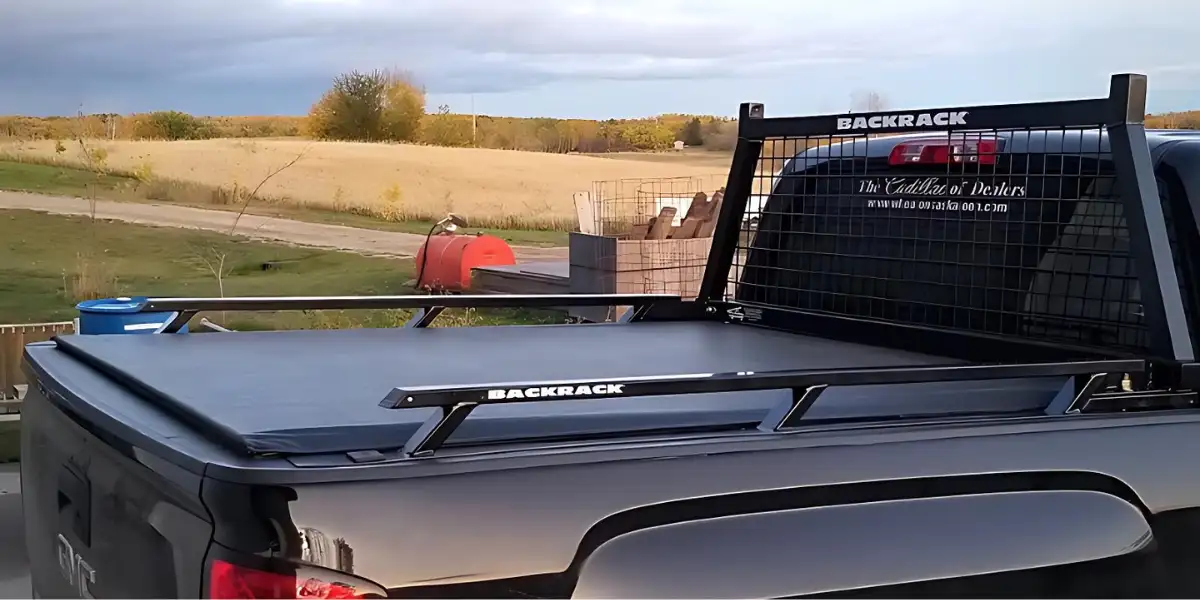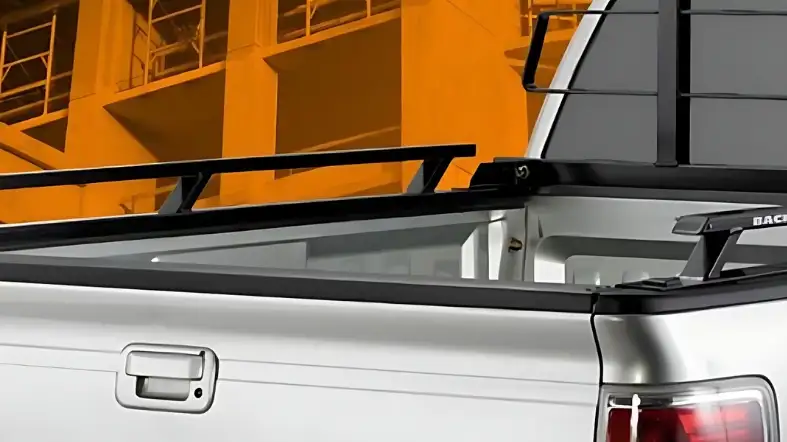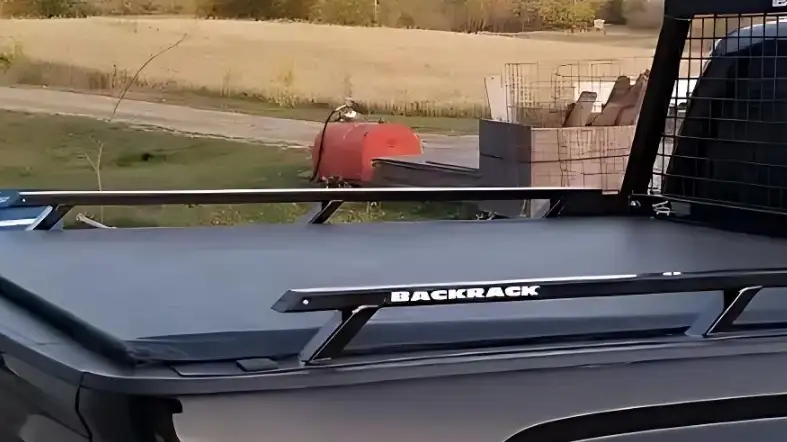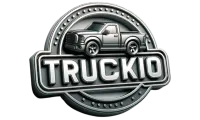Are you considering getting a tonneau cover for your truck bed? You may have come across the term “bed rails” in relation to tonneau cover installation. But do you really need bed rails for a tonneau cover?
In this article, we’ll explore the importance of bed rails and whether they are essential for your tonneau cover.
By the end, you’ll have a clear understanding of whether bed rails are a necessary addition to your truck bed setup. Let’s find out!

Do you need bed rails for a tonneau cover?
Yes, bed rails are recommended for a tonneau cover. They provide added support, security, and stability to the cover, ensuring a proper fit and protection for your truck bed.
How to Install Bed Rails for a Tonneau Cover: A Step-by-Step Guide
Installing bed rails for your tonneau cover is an easy process that ensures a secure and effective setup.
Follow these step-by-step instructions to properly install bed rails for your tonneau cover:
Step 1: Gather the Necessary Tools
To begin, gather the tools required for the installation, including a socket wrench or screwdriver, measuring tape, and the bed rail kit specific to your truck make and model.
Step 2: Prepare the Truck Bed
Clean the truck bed thoroughly, ensuring it is free from dirt, debris, and any existing bed rail components. This provides a clean surface for proper installation.
Step 3: Measure and Mark Placement
Measure and mark the placement of the bed rails along the truck bed. Ensure the measurements are accurate and symmetrical on both sides.
Step 4: Position the Bed Rails
Position the bed rails according to the marked measurements. Align them parallel to the sides of the truck bed, ensuring a consistent and even fit.
Make sure the rails are facing the correct direction, with any necessary brackets or mounting points facing inward.
Step 5: Attach the Bed Rails
Using the provided screws or bolts, securely attach the bed rails to the truck bed. Tighten them firmly, but avoid overtightening to prevent damage.
Follow the manufacturer’s instructions for the specific attachment method recommended for your bed rail kit.
Step 6: Check Alignment and Levelness
After attaching the bed rails, double-check their alignment and levelness. Ensure they are parallel to each other and sit evenly along the truck bed.
Make any necessary adjustments to achieve proper alignment.
Step 7: Secure Additional Components
If your bed rail kit includes additional components, such as support brackets or clamps, secure them according to the manufacturer’s instructions.
These components enhance the stability and strength of the bed rails.
Step 8: Test Fit the Tonneau Cover
Before finalizing the installation, test fit the tonneau cover onto the bed rails.
Ensure it aligns properly and sits securely on the rails without any interference or misalignment. Make any necessary adjustments to ensure a perfect fit.
Step 9: Double-Check and Finalize
Once everything is in place, double-check the tightness of all screws or bolts.
Confirm that the bed rails are securely attached and that the tonneau cover fits snugly. Make any final adjustments if needed.
Factors to Consider When Choosing Bed Rails for a Tonneau Cover

When selecting bed rails for your tonneau cover, it’s important to consider several factors to ensure the best fit and functionality.
By taking these factors into account, you can make an informed decision that meets your specific needs.
Here are the key factors to consider when choosing bed rails for your tonneau cover:
Compatibility with Tonneau Cover
Ensure that the bed rails you choose are compatible with your specific tonneau cover model.
Check the manufacturer’s recommendations or consult the product manual to verify compatibility.
Choosing bed rails designed specifically for your tonneau cover ensures a seamless fit and proper functionality.
Truck Bed Size and Dimensions
Consider the size and dimensions of your truck bed when selecting bed rails.
Measure the length and width of your truck bed to ensure the bed rails are of appropriate length and provide adequate coverage.
Properly sized bed rails will fit snugly and provide maximum support for the tonneau cover.
Material and Construction
Evaluate the material and construction quality of the bed rails.
Look for durable materials such as aluminum or stainless steel that can withstand harsh weather conditions and provide long-lasting performance.
Sturdy construction ensures the bed rails can handle the weight and stress of the tonneau cover, providing a secure attachment.
Installation Method
Different bed rails may have varying installation methods. Consider whether you prefer a clamp-on or drill-on installation.
Clamp-on bed rails offer ease of installation without requiring drilling, while drill-on bed rails provide added stability and security.
Choose the installation method that suits your preference and comfort level.
Bed Rail Design and Style
Bed rails come in various designs and styles. Consider the aesthetic appeal and overall look you desire for your truck.
Choose bed rails that complement the appearance of your vehicle and enhance its overall visual appeal.
Whether you prefer a sleek and minimalistic design or a more rugged and bold style, select bed rails that align with your preferences.
Brand Reputation and Reviews
Research the reputation of the bed rail brand and read customer reviews. Look for brands known for their quality, reliability, and customer satisfaction.
Customer reviews provide valuable insights into the performance and durability of the bed rails, helping you make an informed decision.
Budget Considerations
Determine your budget for bed rails and consider options that align with your financial constraints.
Compare prices and features across different brands to find a balance between affordability and quality.
Remember to prioritize the overall value and performance of the bed rails rather than solely focusing on the price.
What is the Purpose of Bed Rails in Tonneau Cover Installation?

When it comes to installing a tonneau cover on your truck bed, bed rails play a crucial role in ensuring a secure and effective setup.
Bed rails serve multiple purposes in tonneau cover installation, providing essential support and functionality. Here’s a closer look at why bed rails are important:
Secure Attachment
Bed rails act as anchor points for the tonneau cover, ensuring a secure attachment to the truck bed.
They provide a sturdy framework that holds the cover in place, preventing it from shifting or becoming loose during use.
Enhanced Protection
Bed rails create a barrier between the tonneau cover and the truck bed, adding an extra layer of protection.
They help shield the edges of the cover and the bed itself from potential damage caused by shifting cargo, weather elements, or accidental impact.
Improved Weather Resistance
Properly installed bed rails help create a weather-tight seal along the edges of the tonneau cover.
This seal minimizes the entry of water, dust, and debris into the truck bed, keeping your cargo safe and dry, even during adverse weather conditions.
Structural Integrity
Bed rails contribute to the overall structural integrity of the tonneau cover system.
By distributing the weight and stress evenly, they help prevent sagging or warping of the cover over time, ensuring it maintains its shape and functionality.
Compatibility and Customization
Bed rails are designed to work in conjunction with specific tonneau cover models, offering compatibility and seamless integration.
They also provide options for customization, allowing you to add accessories like ladder racks or tie-down points for increased versatility.
Risks of Not Using Bed Rails with a Tonneau Cover
Neglecting to use bed rails can expose you to various risks. It’s important to be aware of these potential dangers to make an informed decision.
Here are the risks you may face if you choose not to use bed rails with your tonneau cover:
Inadequate Attachment
Without bed rails, the tonneau cover may not have a secure attachment to your truck bed.
This can lead to the cover shifting or becoming loose while driving, potentially causing damage to both the cover and your cargo.
Limited Protection
The absence of bed rails leaves the edges of the tonneau cover vulnerable to damage.
Shifting cargo or external factors, such as strong winds or road debris, can impact the cover directly, leading to scratches, dents, or even tears.
This compromises the protection and security of your truck bed.
Weather Vulnerability
Without bed rails, the tonneau cover may fail to create a proper weather seal along the edges.
This can result in water, dust, and other debris entering the truck bed, potentially damaging your cargo.
Additionally, exposure to sunlight and other weather elements can cause premature wear and fading of the tonneau cover material.
Limited Load Support
Bed rails provide structural support to the tonneau cover system. Without them, the cover may struggle to bear the weight of heavy cargo or withstand external forces.
This increases the risk of the cover sagging, warping, or even collapsing under pressure, leading to potential damage or loss of your belongings.
Reduced Durability
The absence of bed rails can impact the overall durability and longevity of the tonneau cover.
Without the added support and stability that bed rails provide, the cover is more susceptible to wear and tear.
This may result in premature deterioration, necessitating frequent replacements or repairs.
Missed Customization Opportunities
Bed rails offer compatibility with various tonneau cover accessories, such as ladder racks or tie-down points.
Not using bed rails means missing out on the opportunity to customize your truck bed setup and enhance its functionality according to your specific needs.
Are Bed Rails Necessary When Replacing a Clamp on a Tonneau Cover?
When replacing a tonneau cover clamp, bed rails are necessary components. These rails effectively secure the clamp, ensuring a sturdy and reliable installation of the tonneau cover. By providing stability and preventing any movement or loosening, bed rails play a crucial role in optimizing the functionality and longevity of the clamp. Make sure to include bed rails when you replace a tonneau cover clamp to maintain a secure and efficient truck bed cover system.
FAQs
Can I Install A Tonneau Cover Without Bed Rails?
While it is possible to install a tonneau cover without bed rails, using bed rails is highly recommended for optimal performance and protection.
Do All Tonneau Covers Require Bed Rails?
Not all tonneau covers require bed rails, but it is advisable to check the specific requirements of your tonneau cover model to determine if bed rails are necessary.
Do Bed Rails Help With Weatherproofing?
Yes, bed rails contribute to weatherproofing by creating a seal along the edges of the tonneau cover, minimizing the entry of water, dust, and debris into the truck bed.
Can I Use Aftermarket Bed Rails With My Tonneau Cover?
Yes, aftermarket bed rails are available that are compatible with various tonneau cover models.
Ensure to choose bed rails that are specifically designed for your truck and tonneau cover.
Are Bed Rails Easy To Install?
Bed rail installation varies depending on the specific model and type.
However, many bed rails come with comprehensive installation instructions and can be easily installed with basic tools and some DIY knowledge.
Final Words
With bed rails, you’ll experience secure attachment, enhanced cargo protection, weather resistance, and increased durability.
Don’t compromise on the safety and performance of your truck bed setup. Choose bed rails tailored to your tonneau cover model, and enjoy the benefits they offer.
Upgrade your truck bed today and keep your cargo safe on every journey.
